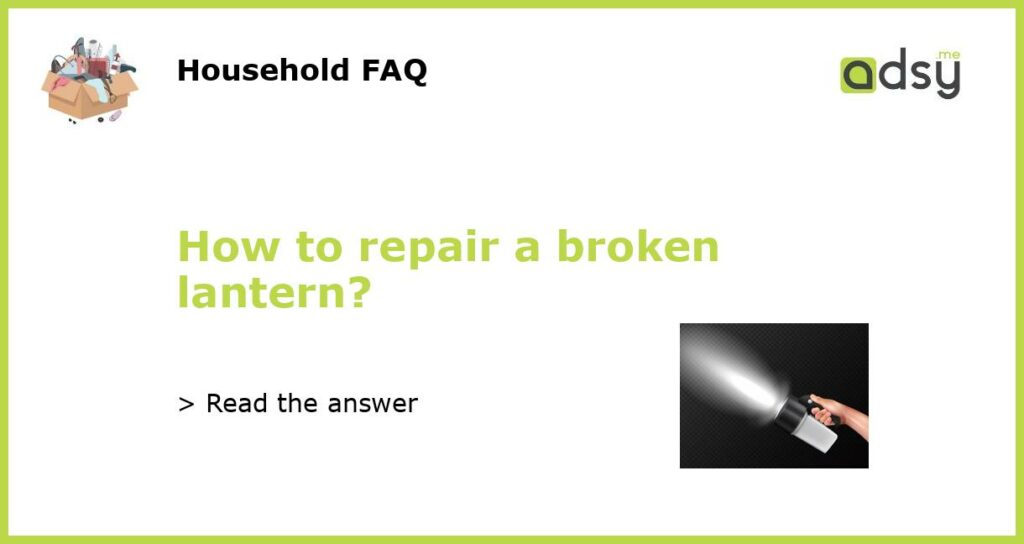Understanding a Broken Lantern
Before repairing a broken lantern, it’s important to understand what might be causing the issue. A broken lantern can be caused by a variety of factors, including a damaged wick, clogged fuel line, or a malfunctioning pump. Examining your lantern and identifying the root cause of the problem can help you move forward with the most appropriate repair.
Replacing a Damaged Wick
If your lantern’s wick is damaged, it will need to be replaced before you can use the lantern again. To replace the wick, first remove the old wick from the lantern. Next, measure the length of the old wick and cut a new wick to match. Insert the new wick into the lantern, ensuring it is properly secured in place. Finally, add oil to the lantern and light the wick to test your repair.
Cleaning a Clogged Fuel Line
If your lantern is experiencing issues with fuel circulation, there might be a clog in your fuel line. To clean a clogged fuel line, first remove the fuel cap and remove any excess fuel from the lantern. Next, use a small wire or tool to clear out any debris or buildup in the fuel line. Finally, replace the fuel cap and test the lantern to ensure proper fuel circulation.
Repairing a Malfunctioning Pump
If your lantern has a malfunctioning pump, it may not be able to create the necessary pressure for fuel circulation. To repair a malfunctioning pump, first remove the pump from the lantern and inspect it for any obvious damage or wear. If there are no visible issues, use a small tool to clean any debris or buildup from the pump. Finally, reassemble the pump and test your repair by attempting to light the lantern.
Troubleshooting Further Issues
If your lantern is still not functioning properly after attempting these repairs, it’s possible that there might be another issue at play. Some additional factors to keep in mind include air pressure, fuel quality, and the age of your lantern. If you’re unable to repair your lantern on your own, consider reaching out to a professional repair service or consulting online resources such as industry forums or manufacturer websites.






